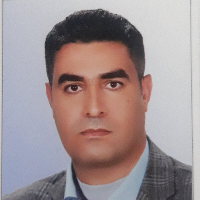Assessment of trophy status of wetlands in Lorestan province based on Carlson TSI index( Case study: Poldokhtar wetlands, Borujerd corridor and Tanodar Doroud wetlands)
Determining the trophy status is one of the assessment and analysis methods of the ecological balance of wetland ecosystems, because the sustainability and continuity of productivity based on these unique ecosystems requires proper monitoring management and control their environmental conditions because increasing nutrients affect all levels of aquatic ecosystems, including changes in species abundance, migration, reduction of biodiversity, and changes in the structure and composition of communities. Therefore, a suitable method should be used to determine the trophy status, or in other words, the production capacity of an ecosystem. Conventional methods for determining the amount of trophy are based on three physical, chemical and biological parameters. Lorestan province due to its unique construction has unique wetlands, including 11 Poldokhtar wetlands with an area of 142.7 hectares, Bishe Dalan wetland with 913.5 hectares and Tanodar wetland with an area of 1000 hectares. In this study, to evaluate the trophy status, sampling of phosphorus (TP), total nitrogen (TN) concentration or Carlson trophy index (TSI) was used in Poldokhtar, Bishe Dalan and Tanodar for summer and winter of 2019. Based on the annual average of Carlson index, Poldakhtar and Bishe Delan wetlands are in mild mesotrophic trophy conditions and Tanodar wetland is in the eutrophic category. In the wetlands of Lorestan province, the sediment load of suspended solids and water turbidity have been exceeded these wetlands limits and has had destructive effects on the unstable wetlands` body due to the annual entry of large amounts of sediment from the catchment, development of gardens, various recreational withdrawals in Boroujerd and Doroud, increasing the level of river water pollution caused by municipal and industrial wastewater, also, wastes from city and rural recreation centers and wastes from point sources of pollution such as warm water fish breeding ponds.
- حق عضویت دریافتی صرف حمایت از نشریات عضو و نگهداری، تکمیل و توسعه مگیران میشود.
- پرداخت حق اشتراک و دانلود مقالات اجازه بازنشر آن در سایر رسانههای چاپی و دیجیتال را به کاربر نمیدهد.


